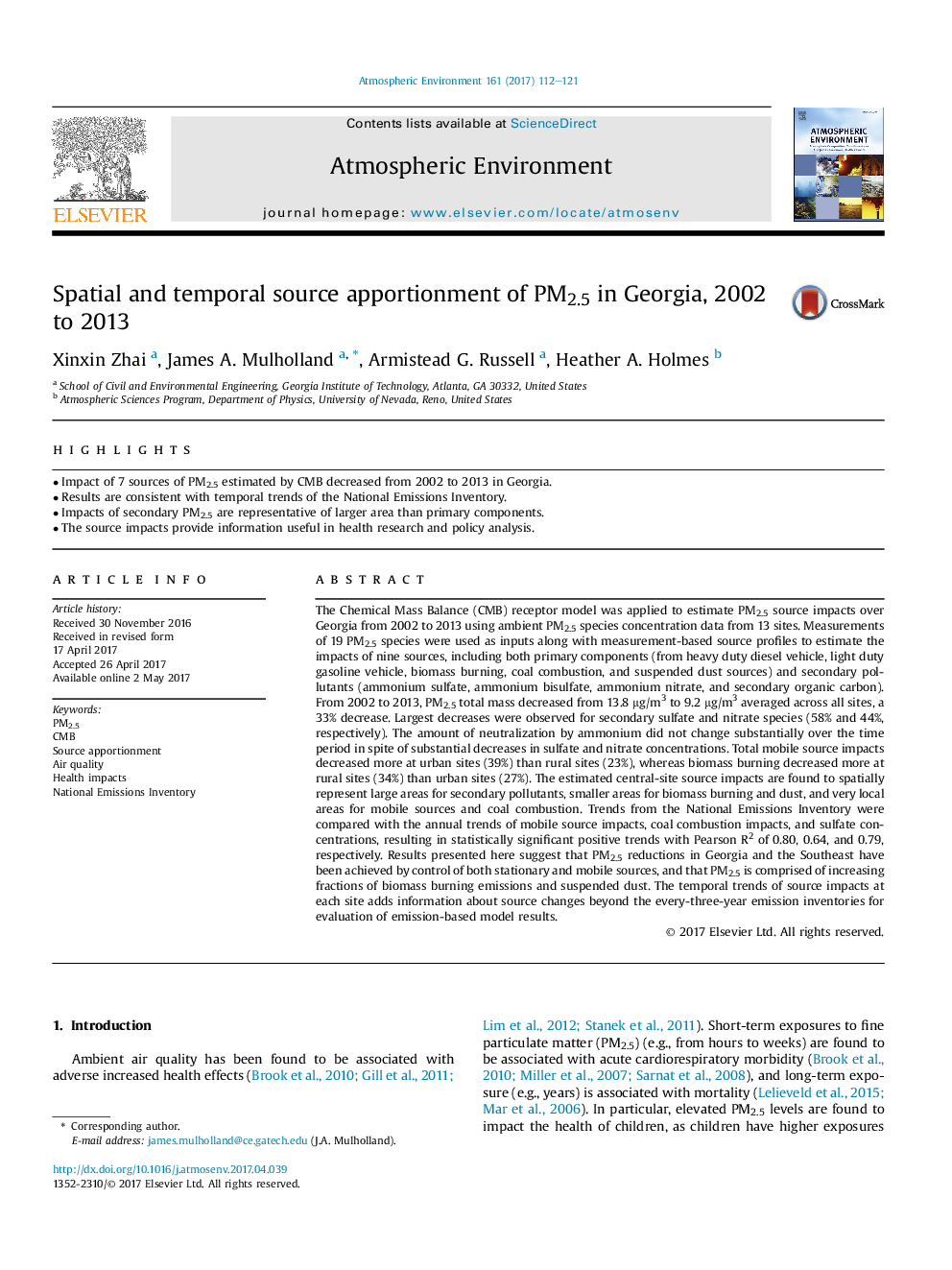| کد مقاله | کد نشریه | سال انتشار | مقاله انگلیسی | نسخه تمام متن |
|---|---|---|---|---|
| 5753236 | 1620313 | 2017 | 10 صفحه PDF | دانلود رایگان |
عنوان انگلیسی مقاله ISI
Spatial and temporal source apportionment of PM2.5 in Georgia, 2002 to 2013
دانلود مقاله + سفارش ترجمه
دانلود مقاله ISI انگلیسی
رایگان برای ایرانیان
کلمات کلیدی
موضوعات مرتبط
مهندسی و علوم پایه
علوم زمین و سیارات
علم هواشناسی
پیش نمایش صفحه اول مقاله

چکیده انگلیسی
The Chemical Mass Balance (CMB) receptor model was applied to estimate PM2.5 source impacts over Georgia from 2002 to 2013 using ambient PM2.5 species concentration data from 13 sites. Measurements of 19 PM2.5 species were used as inputs along with measurement-based source profiles to estimate the impacts of nine sources, including both primary components (from heavy duty diesel vehicle, light duty gasoline vehicle, biomass burning, coal combustion, and suspended dust sources) and secondary pollutants (ammonium sulfate, ammonium bisulfate, ammonium nitrate, and secondary organic carbon). From 2002 to 2013, PM2.5 total mass decreased from 13.8 μg/m3 to 9.2 μg/m3 averaged across all sites, a 33% decrease. Largest decreases were observed for secondary sulfate and nitrate species (58% and 44%, respectively). The amount of neutralization by ammonium did not change substantially over the time period in spite of substantial decreases in sulfate and nitrate concentrations. Total mobile source impacts decreased more at urban sites (39%) than rural sites (23%), whereas biomass burning decreased more at rural sites (34%) than urban sites (27%). The estimated central-site source impacts are found to spatially represent large areas for secondary pollutants, smaller areas for biomass burning and dust, and very local areas for mobile sources and coal combustion. Trends from the National Emissions Inventory were compared with the annual trends of mobile source impacts, coal combustion impacts, and sulfate concentrations, resulting in statistically significant positive trends with Pearson R2 of 0.80, 0.64, and 0.79, respectively. Results presented here suggest that PM2.5 reductions in Georgia and the Southeast have been achieved by control of both stationary and mobile sources, and that PM2.5 is comprised of increasing fractions of biomass burning emissions and suspended dust. The temporal trends of source impacts at each site adds information about source changes beyond the every-three-year emission inventories for evaluation of emission-based model results.
ناشر
Database: Elsevier - ScienceDirect (ساینس دایرکت)
Journal: Atmospheric Environment - Volume 161, July 2017, Pages 112-121
Journal: Atmospheric Environment - Volume 161, July 2017, Pages 112-121
نویسندگان
Xinxin Zhai, James A. Mulholland, Armistead G. Russell, Heather A. Holmes,